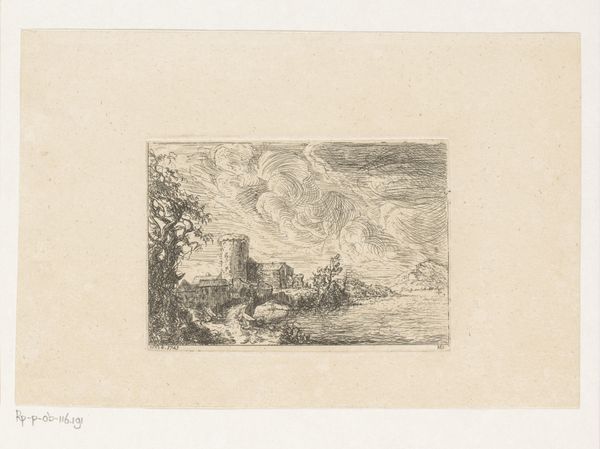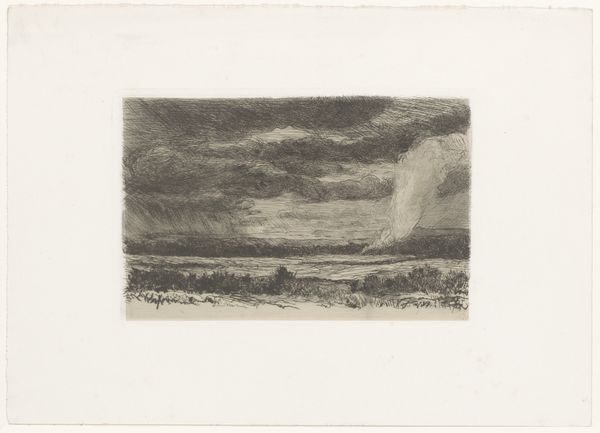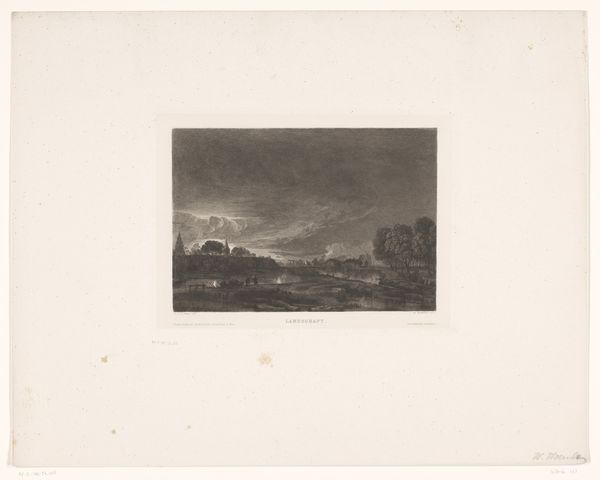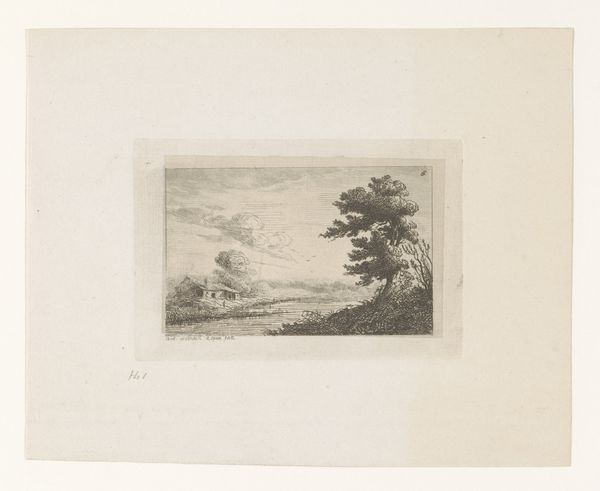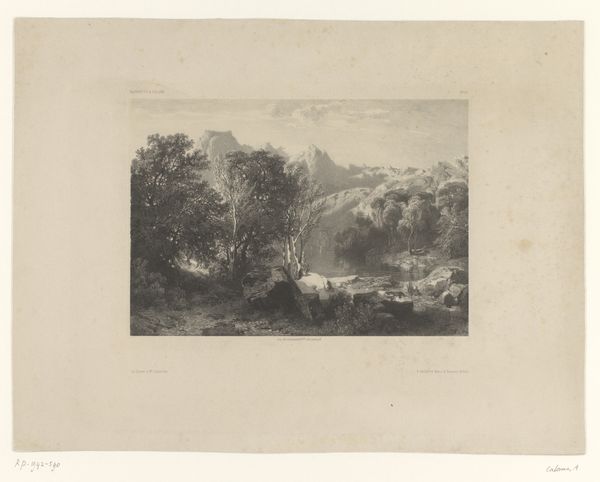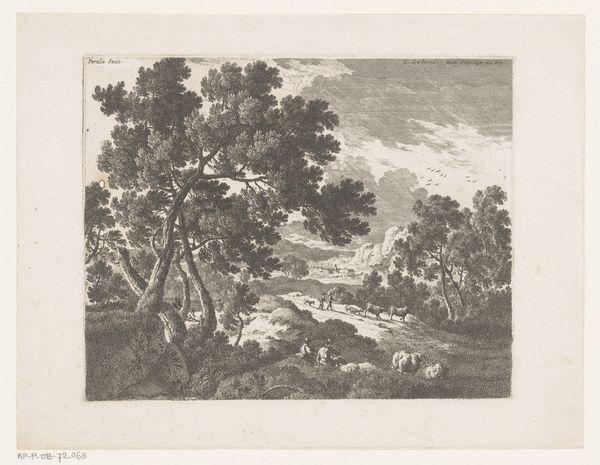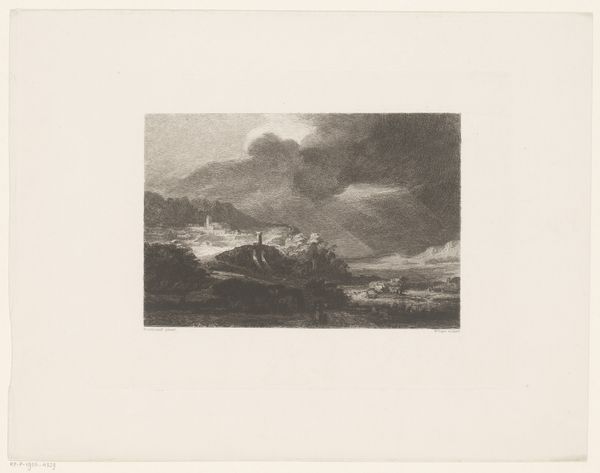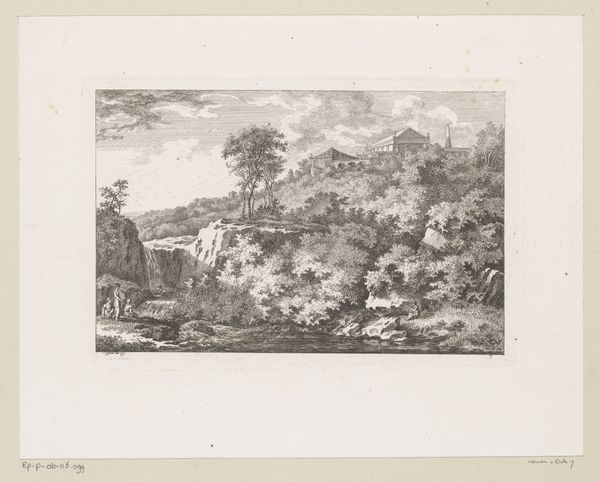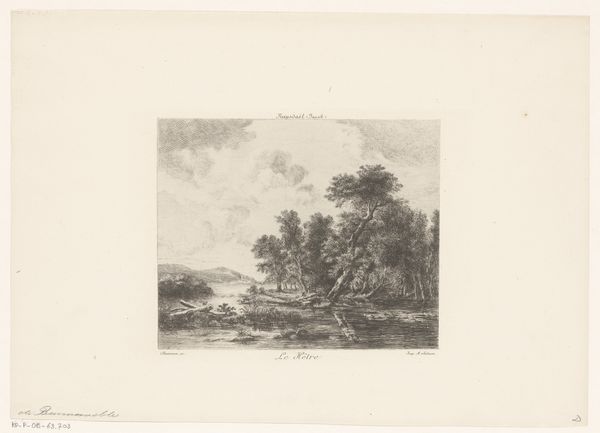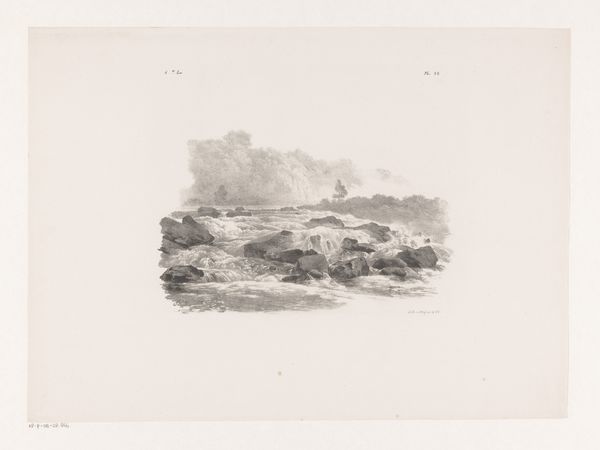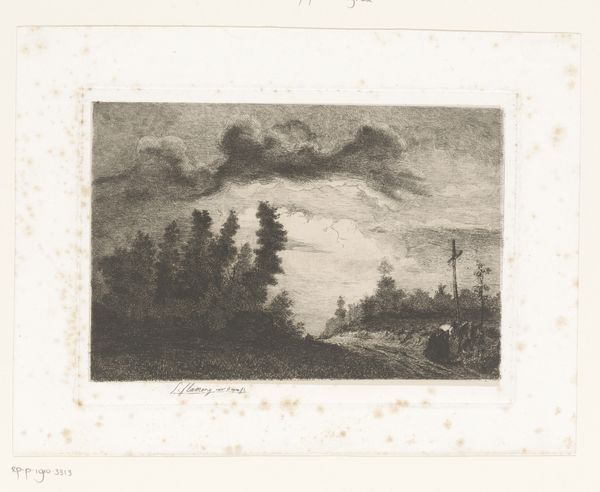
print, etching
#
16_19th-century
# print
#
etching
#
landscape
#
realism
Dimensions: height 176 mm, width 250 mm
Copyright: Rijks Museum: Open Domain
Alexandre Francia created this etching of a landscape with sand dunes in the 19th century. Francia's work speaks to the growth of landscape art during this period, reflecting shifting cultural attitudes towards nature. Consider the influence of the Barbizon School, emphasizing direct observation and naturalism as it moved against academic traditions. Francia engages with these trends, but also was working when there was an expanding art market, with new institutions such as public museums and commercial galleries shaping artistic careers. The etching technique itself is interesting, it allowed for the reproduction of images, making art more accessible to a broader audience. Francia's choice of subject matter and medium reflects a desire to connect with contemporary audiences and participate in the ongoing dialogue about art and nature. By examining exhibition records, art criticism, and other period sources, we can better understand the cultural context in which this landscape was created and appreciated. The meaning of art is contingent on social and institutional context.
Comments
No comments
Be the first to comment and join the conversation on the ultimate creative platform.
